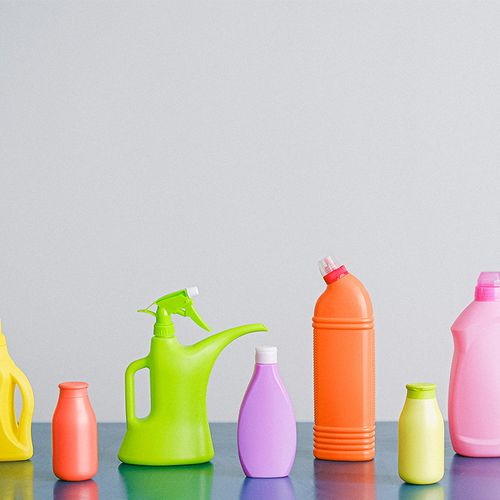Using household cleaning sprays and spray air fresheners just once a week can increase your risk for developing asthma, new research suggests.
Using spray cleaners as little as once a week increased the risk of developing the respiratory ailment by nearly 50%, the researchers found.
"Cleaning sprays, especially air fresheners, furniture cleaners and glass cleaners, had a particularly strong effect. The risk of developing asthma increased with the frequency of cleaning and number of different sprays used, but on average was 30% to 50% higher in people regularly exposed to cleaning sprays than in others," said the study's lead author, Dr. Jan-Paul Zock, PhD, a research fellow at the Centre for Research in Environmental Epidemiology at the Municipal Institute of Medical Research in Barcelona, Spain.
Background
Previous research found an association between asthma and being employed as a professional cleaner. Other studies have also noted a link between respiratory symptoms and certain cleaning products, but Dr. Zock and his colleagues wanted to learn if typical household exposures to cleaning products would have any effect on the development of asthma.
The Study
Drawing on a 10-country database called the European Community Respiratory Health Survey, the researchers identified more than 3,500 people without any history of asthma or asthma symptoms. All reported being responsible for the cleaning of their homes.
Study participants were followed for nine years. Overall, 42% of the participants reported using a spray cleaner at least once a week. Glass cleaning sprays were the most commonly used sprays, with about 22% reporting using them at least once a week.
Weekly use of a spray cleaner increased the risk for asthma by 45% in women and 76% in men. Among those who used the cleaning sprays at least four days a week, the risk for asthma was more than doubled.
Liquid multi-purpose cleaners were also frequently used-just over 83% said they used such a product at least once a week. However, the researchers didn't find any association between asthma and properly used liquid cleaners.
Implications
Whether or not the cleaning products are a direct cause of asthma, or simply a trigger for people who already have the disease, isn't clear.
However, the research team believes that spray cleaners can be a cause of new-onset asthma, because the people included in this study did not have asthma or asthma symptoms at the start of the study.
What To Do
Dr. Zock said it's too soon to tell people to swear off spray cleaners altogether, but added, "Nevertheless, from the perspective of precaution, we may recommend to use sprays only when really necessary. In most cases, it is possible to replace the spray by non-spray cleaning liquids and to do the cleaning properly. If [sprays are] used, people can protect themselves by opening windows, avoiding the application near the breathing zone, and by using masks or other types of personal respiratory protection."
"Cleaning compounds are generally just tested to make sure that they don't kill people or cause cancer," noted Dr. David Rosenstreich, MD, director of the division of allergy and immunology in the department of medicine at Montefiore Medical Center and Albert Einstein College of Medicine in New York City.
"But these products may not be safe for asthmatics to breathe in. And, if it's not safe for asthmatics, it's probably not safe for anyone else," he said.
His advice: "Switch to liquid cleaning products rather than aerosols. If there's any difference in cleaning, it's a small sacrifice to be made in terms of protecting your respiratory health. But don't forget that old-fashioned liquid cleaning products can involve risks for respiratory disorders as well. The most notorious example is bleach, particularly when mixed with other cleaners-something that should never be done."
Ease Asthma with Acupressure
Acupressure—applying thumbs or fingertips A to pressure points on the body—can help people with asthma. One primary acupressure point for the lungs is located at the intersection of the shoulder and shoulder blade on either shoulder. Use mild, consistent pressure and hold for 30 to 60 seconds y and repeat twice. This technique can be up to three times daily, regardless of whether you have symptoms.
Caution: If you experience any sudden change in your breathing, such as difficulty breathing, go to the emergency room.
Amazing Technique Cuts Asthma Symptoms by 33%
The Papworth method, created in the 1960s at Papworth Hospital in Cambridgeshire, England, can help anyone who starts breathing rapidly and shallowly because of anxiety. It had not been studied in asthma patients until recently. It has now been shown to cut asthma symptoms by one-third, but it does not improve lung function or replace medications. This form of physical therapy integrates breathing and relaxation exercises to discourage shallow breaths while focusing on slow nasal expiration using the abdomen and diaphragm. It teaches patients to recognize stress and use breathing to physically manage that stress. Ask your doctor for a referral to a respiratory therapist who teaches the technique.
